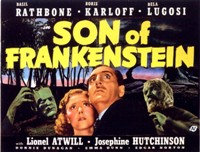Humor and the Law, Part Two
 In honor of April Fools’ Day, the editors of the blog asked the faculty of the Law School to share their favorite examples of legal humor. Every day we will share a different faculty member’s submission. Today’s submission is from Professor Bruce Boyden.
In honor of April Fools’ Day, the editors of the blog asked the faculty of the Law School to share their favorite examples of legal humor. Every day we will share a different faculty member’s submission. Today’s submission is from Professor Bruce Boyden.
A new lawyer is trying his first criminal case, representing a man accused of biting another man’s ear off in a bar fight. Eager to show off his trial skills, he begins to cross-examine the prosecution’s first witness: the bartender on the night of the fight.
Q. You were tending bar that night, isn’t that correct?
A. Yes I was.
Q. And the bar was quite crowded that night, wasn’t it?
A. Yes.
Q. There were quite a lot of people standing in front of the bar, ordering drinks, isn’t that right?
A. Yes, that’s right.
Q. And the defendant was standing 10 to 20 feet away from the bar when the fight started, correct?
A. Yes he was.
Q. So there were several people between you and him?
A. Yes, there were.
Q. And you were quite busy serving drinks to those people, weren’t you?
A. Yes I was.
Q. So that you weren’t looking at the defendant when the fight started, were you?
A. No I wasn’t.
Q. And in fact, you couldn’t see the defendant when the fight started, could you?
A. No, I don’t think I could.
Q. Therefore, isn’t it true that you did not actually see the defendant bite the ear of the other man?
A. Yeah, that’s right. I didn’t see him bite the ear off.
Proud of his cross-examining prowess, the young lawyer smiled at the jury and asked one more question.
Q. So why did you testify that the defendant bit the man’s ear off?
A. Because I saw him spit it out a second later.


 The House Judiciary Committee held a
The House Judiciary Committee held a